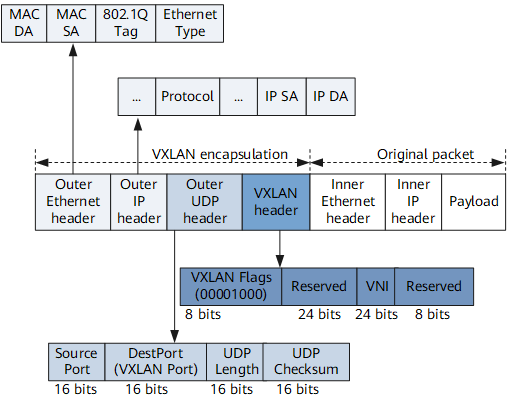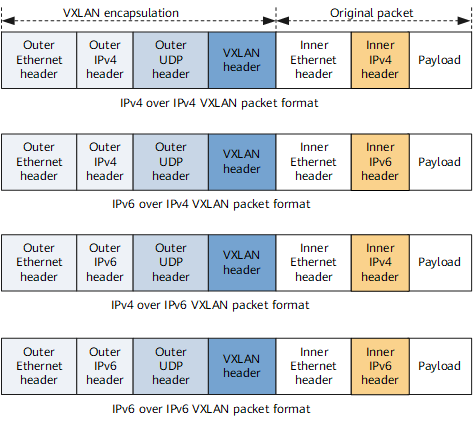In the case of intra-subnet communication (Layer 2 forwarding), the default hash factor used for calculating the source port number is L2VNI+MAC address. You can change the hash factor to L2VNI through configuration. If the L2VNI+MAC address or L2VNI value is unique, traffic fails to be hashed. In this case, you can configure Layer 2 deep hash to calculate the source port number based on the source IP address, destination IP address, source port number, destination port number, and protocol type.
In the case of inter-subnet communication (Layer 3 forwarding), the default hash factor used for calculating the source port number is L3VNI+IP address. You can change the hash factor to L3VNI through configuration.

